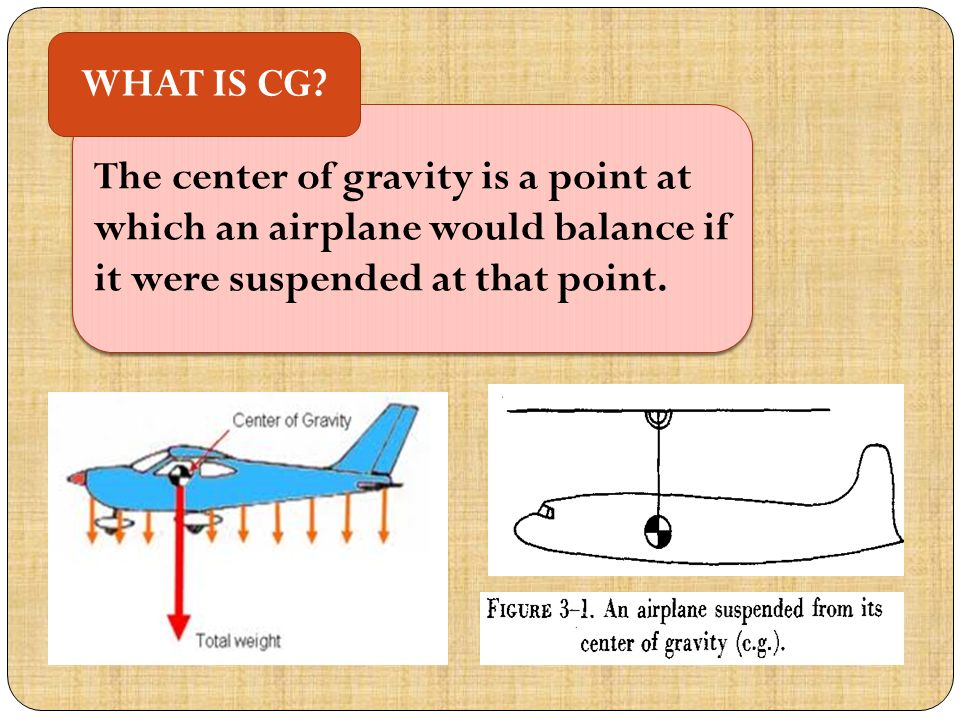Story of gravity
Isaac Newton: Who He Was, Why Apples Are Falling
Legend has it that Isaac Newton formulated gravitational theory in 1665 or 1666 after watching an apple fall and asking why the apple fell straight down, rather than sideways or even upward.
"He showed that the force that makes the apple fall and that holds us on the ground is the same as the force that keeps the moon and planets in their orbits," said Martin Rees, a former president of Britain's Royal Society, the United Kingdom's national academy of science, which was once headed by Newton himself.
"His theory of gravity wouldn't have got us global positioning satellites," said Jeremy Gray, a mathematical historian at the Milton Keynes, U.K.-based Open University. "But it was enough to develop space travel."
Isaac Newton, Underachiever?
Born two to three months prematurely on January 4, 1643, in a hamlet in Lincolnshire, England, Isaac Newton was a tiny baby who, according to his mother, could have fit inside a quart mug. A practical child, he enjoyed constructing models, including a tiny mill that actually ground flour—powered by a mouse running in a wheel.
Admitted to the University of Cambridge on 1661, Newton at first failed to shine as a student.
In 1665 the school temporarily closed because of a bubonic plague epidemic and Newton returned home to Lincolnshire for two years. It was then that the apple-falling brainstorm occurred, and he described his years on hiatus as "the prime of my age for invention."
Despite his apparent affinity for private study, Newton returned to Cambridge in 1667 and served as a mathematics professor and in other capacities until 1696.
Isaac Newton: More than Master of Gravity
Decoding gravity was only part of Newton's contribution to mathematics and science. His other major mathematical preoccupation was calculus, and along with German mathematician Gottfried Leibniz, Newton developed differentiation and integration—techniques that remain fundamental to mathematicians and scientists.
Meanwhile, his interest in optics led him to propose, correctly, that white light is actually the combination of light of all the colors of the rainbow. This, in turn, made plain the cause of chromatic aberration—inaccurate color reproduction—in the telescopes of the day.
To solve the problem, Newton designed a telescope that used mirrors rather than just glass lenses, which allowed the new apparatus to focus all the colors on a single point—resulting in a crisper, more accurate image. To this day, reflecting telescopes, including the Hubble Space Telescope, are mainstays of astronomy.
Following his apple insight, Newton developed the three laws of motion, which are, in his own words:
- Newton's Law of Inertia: Every object persists in its state of rest or uniform motion in a straight line unless it is compelled to change that state by forces impressed upon it.
- Newton's Law of Acceleration: Force is equal to the change in momentum (mV) per change in time.
 For a constant mass, force equals mass times acceleration [expressed in the famous equation F = ma].
For a constant mass, force equals mass times acceleration [expressed in the famous equation F = ma]. - Newton's Law of Action and Reaction: For every action, there is an equal and opposite reaction.
Newton published his findings in 1687 in a book called Philosophiae Naturalis Principia Mathematica (Mathematical Principles of Natural Philosophy) commonly known as the Principia.
"Newton's Principia made him famous—few people read it, and even fewer understood it, but everyone knew that it was a great work, rather like Einstein's Theory of Relativity over two hundred years later," writes mathematician Robert Wilson of the Open University in an article on a university website.
Isaac Newton's "Unattractive Personality"
Despite his wealth of discoveries, Isaac Newton wasn't well liked, particularly in old age, when he served as the head of Britain's Royal Mint, served in Parliament, and wrote on religion, among other things.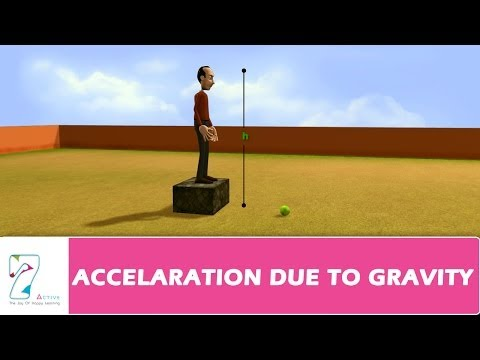
"As a personality, Newton was unattractive—solitary and reclusive when young, vain and vindictive in his later years, when he tyrannized the Royal Society and vigorously sabotaged his rivals," the Royal Society's Rees said.
Sir David Wallace, director of the Isaac Newton Institute for Mathematical Sciences in Cambridge, U.K., added, "He was a complex character, who also pursued alchemy"—the search for a method to turn base metals into gold—"and, as Master of the Mint, showed no clemency towards coiners [counterfeiters] sentenced to death."
In 1727, at 84, Sir Isaac Newton died in his sleep and was buried with pomp and ceremony in Westminster Abbey in London.
Gravity
Gravity- Humans only recently (like in the last 300 years) realized what Gravity is all about.
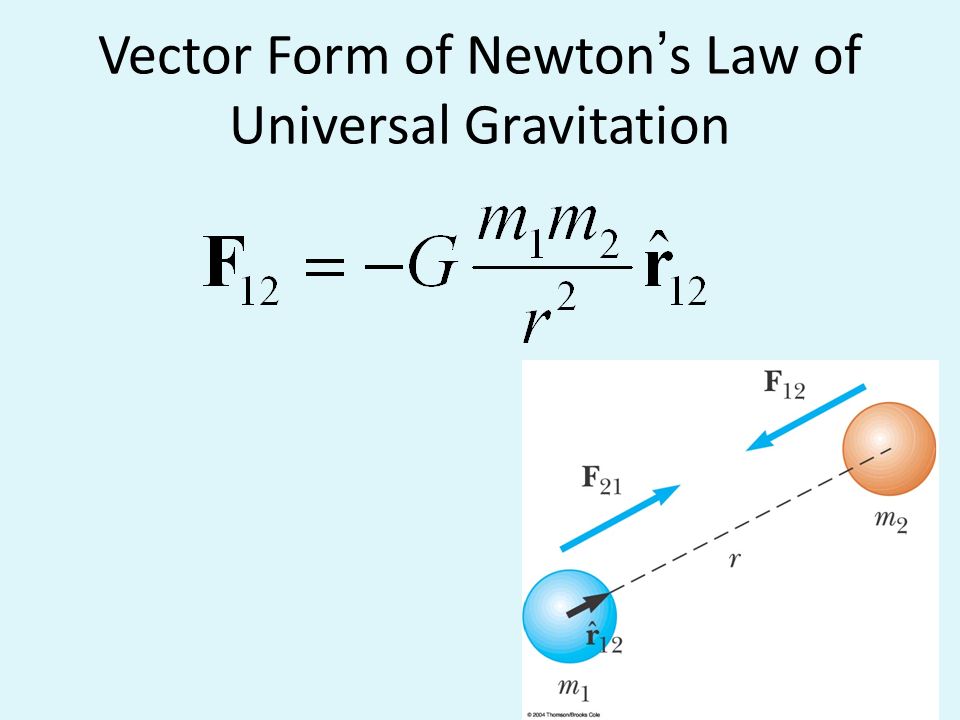
- Greek philosophers thought that the planets and stars were part of the gods' realm and followed a "natural motion." They did not realize that Gravity is involved. The Greeks' ideas stuck around until the 16th century.
- Beginning in the 1500s, though, astronomers like Galileo and Brahe discovered that the earth and other planets revolved around the sun. Kepler showed that they moved in an eliptical orbit, not a circle. The question was why.
- Sir Isaac Newton was an English mathematician and mathematician and physicist who lived from 1642-1727.
- The legend is that Newton discovered Gravity when he saw a falling apple while thinking about the forces of nature.
- Whatever really happened, Newton realized that some force must be acting on falling objects like apples because otherwise they would not start moving from rest.

- Newton also realized that the moon would fly off away from Earth in a straight line tangent to its orbit if some force was not causing it to fall toward the Earth. The moon is only a projectile circling around the Earth under the attraction of Gravity.
- Newton called this force "gravity" and determined that gravitational forces exist between all objects.
- Using the idea of Gravity, Newton was able to explain the astronomical observations of Kepler.
- The work of Galileo, Brahe, Kepler, and Newton proved once and for all that the Earth wasn't the center of the solar system. The Earth, along with all other planets,orbits around the sun.
- Two astronomers, J.C. Adams and U.J.J. LeVerrier, later used the concept of Gravity to predict that the planet Neptune would be discovered. They realized that there must be another planet exerting a gravitational force on Uranus because Uranus had odd perturbations in its orbit.
 (Perturbations are deviations in orbits.)
(Perturbations are deviations in orbits.)
- Einstein developed a whole new idea about Gravity.
- According to Einstein, Gravity arises from the "warping" of space and time.
- Einstein's new theory of Gravity explains a number of phenomena that would violate Newton's theory. For example, light bends when passing near massive objects like the Sun. And a clock raised above the Earth speeds up relative to a clock on the surface.
- Gravity is a force of attraction that exists between any two objects. There is a force of gravity between the sun and the Earth, between the Earth and us, and even between two marbles.
- Projectiles, satellites, planets, galaxies, and clusters of galaxies are all influenced by Gravity.
- Gravity is the weakest of the four known forces of nature, yet the most dominant force.
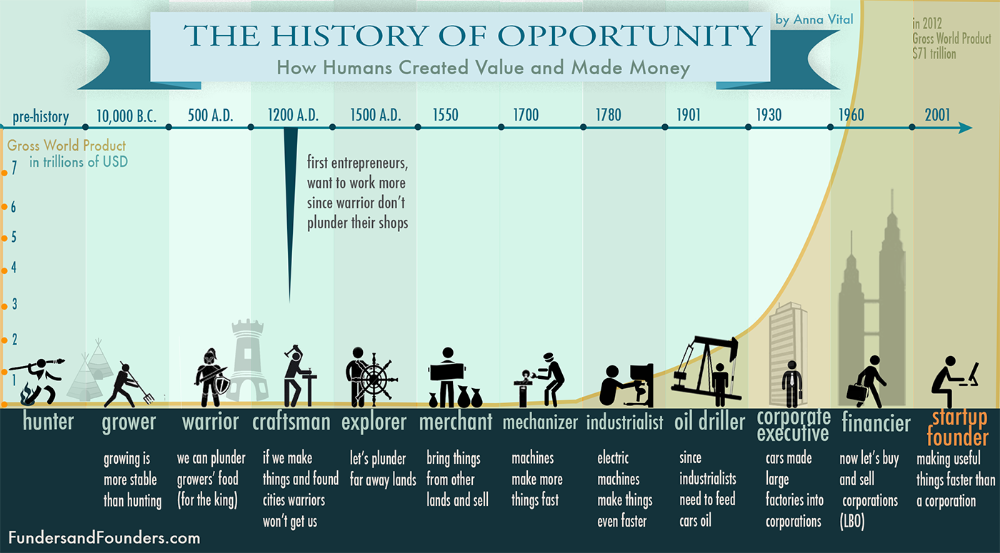 Even though it's the weakest force, Gravity holds together entire solar systems and galaxies!
Even though it's the weakest force, Gravity holds together entire solar systems and galaxies! - The law of universal gravitation says that every object attracts every other object with a force that, for any two objects, is directly proportional to the mass of each object and inversely proportional to the square of the distance between the two objects.
- The gravitational formula is
- This is an example of the "inverse-square law": gravitational force varies as the inverse square of the distance between the two objects. As a result, the effect of Gravity falls rapidly as the distance increases between two objects.
- The best current estimate of G is that it eqauls about 6.67259 10-11 newton-square meter per square kilogram.
- The gravitational field for a planet, g, equals GM/Rsquared, where G is the mass of the planet and R is the distance of the object from the center of the planet (the planet's radius if the object is on the surface of the planet).
 This means that Gravity is greater where a planet is more massive and where it has a smaller radius. So even though Mars has only about 1/10th of the mass of the Earth, the gravitational force on the surface of Mars is more than 1/10th that on the surface of the Earth -- because Mars' surface is closer to the planet's surface!
This means that Gravity is greater where a planet is more massive and where it has a smaller radius. So even though Mars has only about 1/10th of the mass of the Earth, the gravitational force on the surface of Mars is more than 1/10th that on the surface of the Earth -- because Mars' surface is closer to the planet's surface! - The force of attraction between you and the Earth is your weight.
- Gravity determines the "escape speed" for an object like a rocket. The stronger the gravitational pull of the object, the larger the escape speed. The following chart shows the escape speed for the sun, two planets, and the Earth's moon.
| Sun | 620 km/s |
| Jupiter | 60.2 km/s |
| Earth | 11.2 km/s |
| Moon | 2. 4 km/s 4 km/s |
- The first reliable measurement of G was made by Henry Cavendish in 1798! He calculated that G was equal to 6.754 10-11 newton-square meter per square kilogram (compared to today's calculation of 6.67259).
- Some theories suggest that G is changing over time and that G varies somewhat in different regions of space!
- No matter how great the distance between an object and the Earth, the Earth's gravitational force does not drop to 0. The gravitational influence of every object is exerted through all space.
- Earth is round because of Gravity. Earth attracted itself together before it became solid.
- There is gravitational attraction between two marbles, but we don't notice it because the force between each of the marbles and the Earth is so much greater.
- A person who weighs 100 pounds on the Earth would weigh only 17 pounds standing on the same scale on the moon.
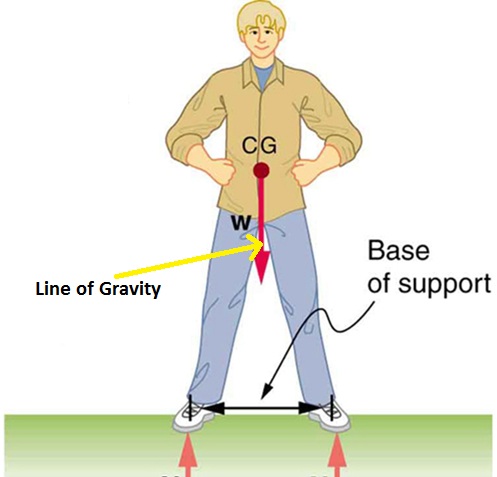
- According to Albert Einstein, there is no difference between the acceleration of Gravity and any other acceleration. If you were in a rocket accelerating at 32.2 ft/sec2, it would feel just like gravity on the Earth.
- There are no known anti-gravity devices (ah shucks)! But the effects of Gravity can be canceled by free-fall or by placing objects in orbit.
*A web presentation on Gravity. (5 out of 5)
Exploring Gravity. (4 out of 5)
NASA's Gravity Page (5 out of 5)
A page on gravatation. (3 out of 5)
Institute for gravation research. (3 out of 5)
So why not
History of gravity - frwiki.wiki
For a physical description of the gravitational phenomenon, see Gravity.
The history of the theories of gravity allows us to see how many theories of gravity, which succeeded each other since Aristotle, illustrated cataclysms in the understanding of the world.
The word serious in Greek means heavy , heavy . For Aristotle, the heavy body is reunited with its "natural place", which is the center of the Earth. There was a notion in Aristotelian thought that the laws of physics that govern phenomena on earth do not coincide with the laws that govern phenomena that can be observed in the sky. With the Earth at the center, the universe was divided into two: sublunar and supralunar worlds. According to this view, gravity was part of the laws governing the sublunar world and did not appear to have any consequences for the behavior of celestial bodies.
Later, in X - m century Persian and Muslim astronomer Al-Khwarizmi (or Muhammad ibn Musa) postulated the existence of an attractive force between celestial bodies already foreshadowing Newton's law of universal gravitation from Newton.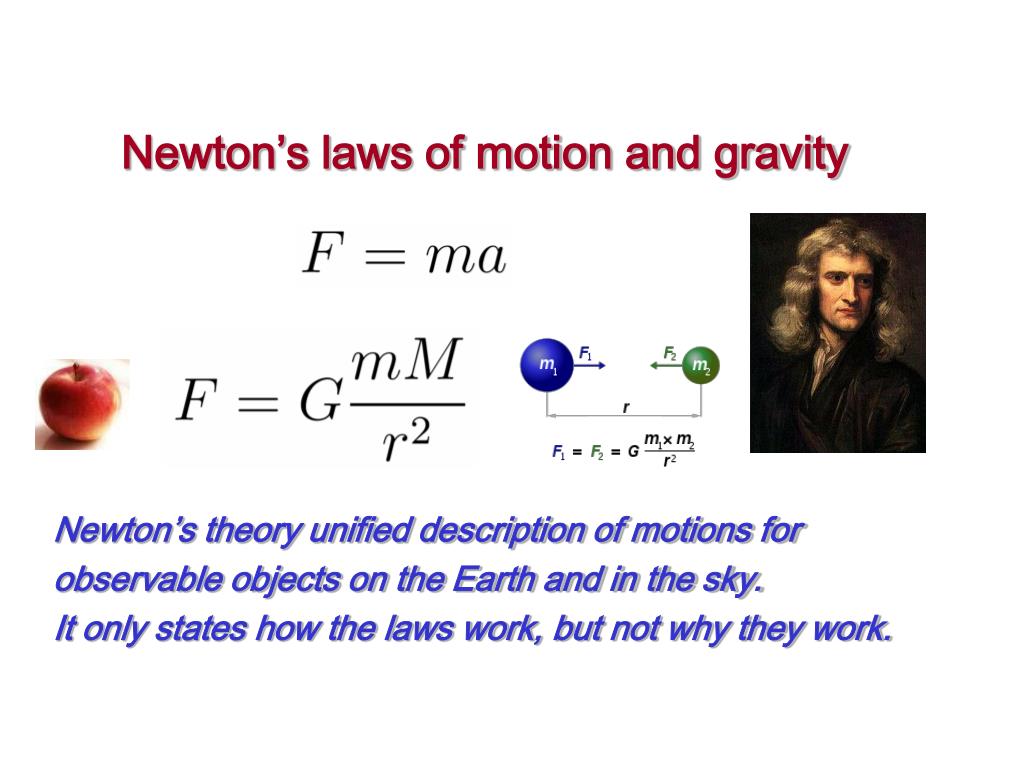 nine0003
nine0003
Persian and Muslim astronomer Jafar ibn Muhammad ibn Musa Shakir prove to be the first to refute X - th century design of the Aristotelian world, claiming that the celestial bodies and celestial spheres are subject to the same physical laws as the earth, thus , definitively links the two worlds.
In the two worlds caused by Aristotle were also merged into one with the publication of the Philosophiae Naturalis Principia Mathematica, in which Isaac Newton revealed his universal law of gravity, thus ending the Copernican revolution: the Earth became only one star among others. nine0003
The current theory of gravity, general relativity, was presented by Albert Einstein in 1915. It was a complete reworking of what used to be called "gravity". The instantaneous action at a distance characteristic of Newtonian gravity is no longer compatible with Einstein's work on the speed of light.
In general relativity, gravity must travel at the same speed as light. The apparent attraction of massive bodies to each other is no longer perceived as a "force", but rather as an inevitable consequence, generated by the deformation of the geometry of space-time by the massive objects located there. The term "gravitational interaction" is now preferred over the term "gravitational force". nine0003
General relativity is the basis of cosmology, all observations made so far are fully compatible with it. In astronomy, it is responsible for several phenomena such as the orbit of celestial bodies, star formation, black holes, etc.
In order to try to understand the history of the "first moments of the universe" (Planck epoch), it is necessary to develop a quantum theory of gravity, which is still to be done...
Summary
- 1 Antiquity
- 1.1 Aristotle
- 2 Middle Ages
- 2.1 Brahmagupta
- 2.
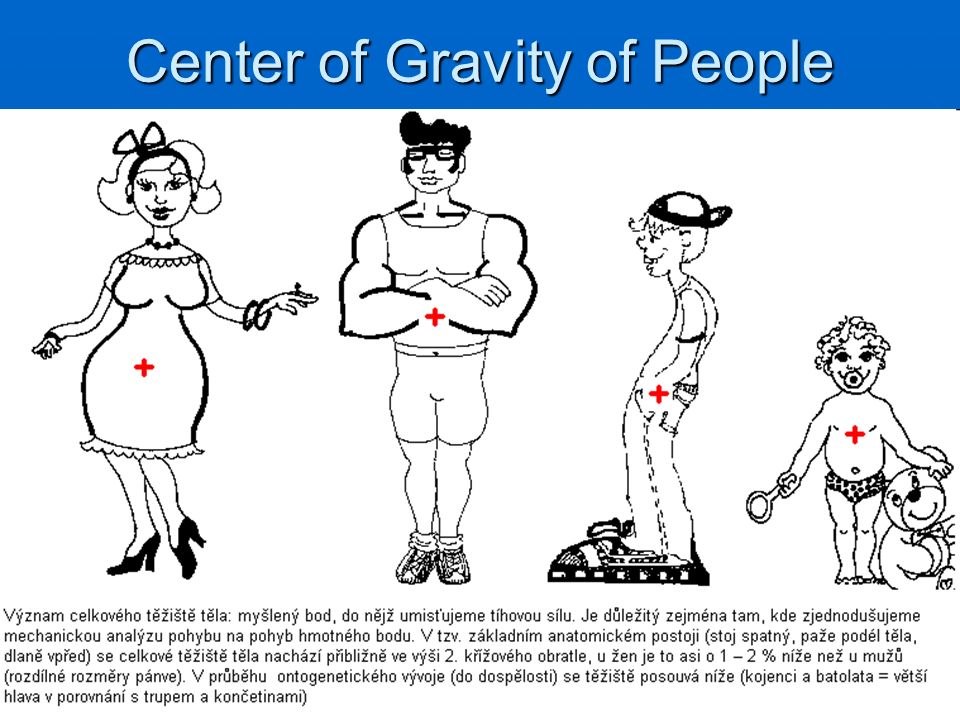 2 Scientia from ponderibus
2 Scientia from ponderibus - 2.3 Scientia from Sphaera Mota
- 2.3.1 Impulse
- 3 From the Renaissance to the present
- 3.1 Galileo
- 3.2 Descartes
- 3.3 From Galileo to Newton
- 3.4 Newton and Hooke
nine0055 4 From modern to modern - 4.1 Between Newton and Einstein
- 4.2 Einstein and later
- 5 Notes
- 6 Bibliography
- 7 See also
- 7.1 Internal links
- 7.2 External link
antiquity
Aristotle
Aristotle, philosopher . 384 BC AD, 322 BC J.-K.
Aristotle's theses in the field of physics reject the whole spirit of previous physicists (Miletians, Pythagoreans, Democritus...) and have long influenced philosophy and Western science. nine0003
Based on his observations, he presents a qualitative physics in which his theory of causes determines the reasons for which events occur, while simultaneously dealing with what is today related to physics, medicine, sculpture, commerce, the soul, etc.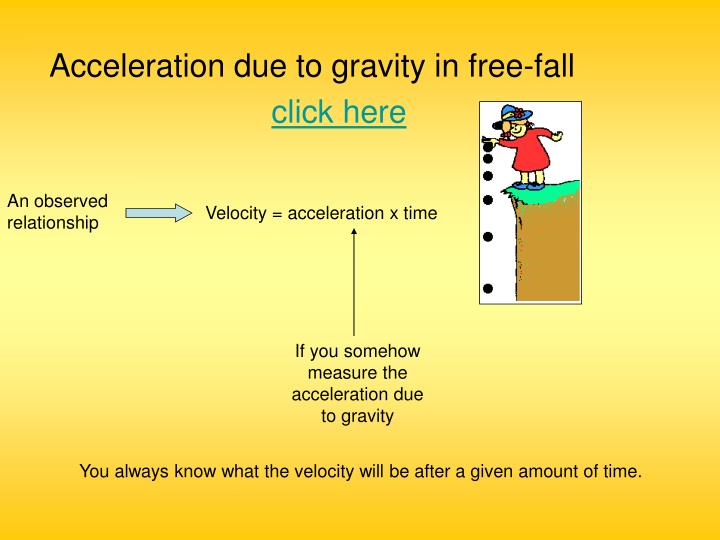 Causes any movement is in fuel out of beings natural movement; to such an extent that the word " movement" causes for him a change of state of the being concerned. Thus, the concepts of motion, infinity, place and time are not considered as separate from the substance of bodies, and any the movement (in the sense mentioned above) is the completion of the transition from the initial state to the final state (which manifests itself as rest): the final state potentially was present in the initial state, and its realization is the final cause of the movement .
Causes any movement is in fuel out of beings natural movement; to such an extent that the word " movement" causes for him a change of state of the being concerned. Thus, the concepts of motion, infinity, place and time are not considered as separate from the substance of bodies, and any the movement (in the sense mentioned above) is the completion of the transition from the initial state to the final state (which manifests itself as rest): the final state potentially was present in the initial state, and its realization is the final cause of the movement .
Analyzing the world in this way, he singles out four causes: material, formal, driving, final. According to this diagram, it is heavy objects that fall by nature, the reason for the fall lies in the internal properties of the falling object, therefore, it is not external to the mentioned object. For example : nine0003
- A stone has fallen.

- The stone was above: its stone state ( material cause ) makes it a heavy body, that is, a body whose proper state should be below, not above.
- The stone has fallen: it has gone to its place (state: to be down). His fall is connected with this purpose ( ultimate cause ).
A motive reason intervenes only to obtain time from its own state, this corresponds to the phrase of Aristotle: “Everything that moves is moved by something else; this motor, in turn, either moves or it doesn't; if not, we have what we were looking for, the first motionless engine, and that is what we call god [...]. ". For example, a motive cause must intervene so that a heavy object is no longer in the proper state of sinking, but there is no motive cause for it to return to the ground. nine0003
Thus, for Aristotle, the fall of a body is just a problem of the qualitative state of this body, which must be able to be classified in accordance with the logic of the world and its universe.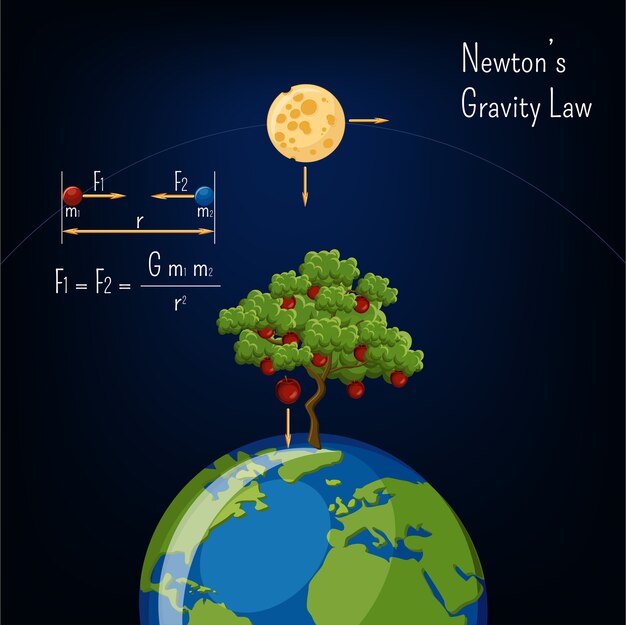
Average age
Brahmagupta
In VII - th centuries, the Indian astronomer and mathematician Brahmagupta, to whom we owe the concept of mathematics from zero, rejected the concepts that existed at that time about the shape of the Earth. Brahmagupta suggested that the earth is round. Faced with the apparent absurdity of this posture regarding the shape of the world, his contemporaries pointed out to him that if the Earth was indeed round, then the trees and stones that lay on its ground would have to fall off the ground in order to take off. get lost in the immensity of the sky. Brahmagupta answered them thus: nine0003
“(...) All heavy objects are drawn to the center of the Earth. (...) The earth remains unchanged on all sides. All the peoples of the Earth stand upright there, and all heavy bodies fall back to the Earth according to natural law, because the nature of the Earth is to attract and hold objects on itself, since it is the nature of water to flow, fire to burn.
and the wind blows..."
Thus, for Brahmagupta, unlike Aristotle, it is not the bodies that must fall, but the task of making the bodies fall is on Earth. nine0003
La
Scientia de ponderibusLa
Scientia de sphaera motaImpetus
From the Renaissance to the present
Galileo
Statue of Galileo in Florence's Uffizi Square
As soon as Galileo expounds (circa 1602, published in Dialogue sur les deux grands Systèmes du monde (1632)) his law of falling bodies, several problems arise:
Gravity is not uniform: Galileo knows that the Earth is round and that gravity pulls towards the center of the Earth. nine0003
Galileo does not realize that the Moon is affected by the same force. For him there is a sublunar world and a heavenly world: in his dialogue on the two great systems of the world, Tycho Brahe's system and the Copernican system, he chose Copernicus and argues that the heavens are not "fixed" and that comets pass through all fixed spheres. First of all, it concerns the gravity of the Earth.
First of all, it concerns the gravity of the Earth.
His first problem is to understand why 1 kg lead falls like 2 kg lead (despite air resistance of course). His reasoning is very subtle. Instead of going back to it again, let's consider a similar problem: the slow fall of a simple pendulum: the motion of two identical pendulums side by side is apparently exactly the same (identity of causes: identity of effects). Lions, "thought", two masses: nothing changes; and yet it really is a pendulum in 2 kg, which is swinging now. This is the same type of argument used by Galileo: the motion of a pendulum, or any slow, frictionless fall, is independent of a point mass that slides (translated) along a curve.
So there are two remarkable facts in Galileo's statement:
- The least important, which we give the most importance: the height varies like t², or what Galileo "tested": the average speed is half the final speed (identical from a mathematical point of view, see Free fall, cinematic).
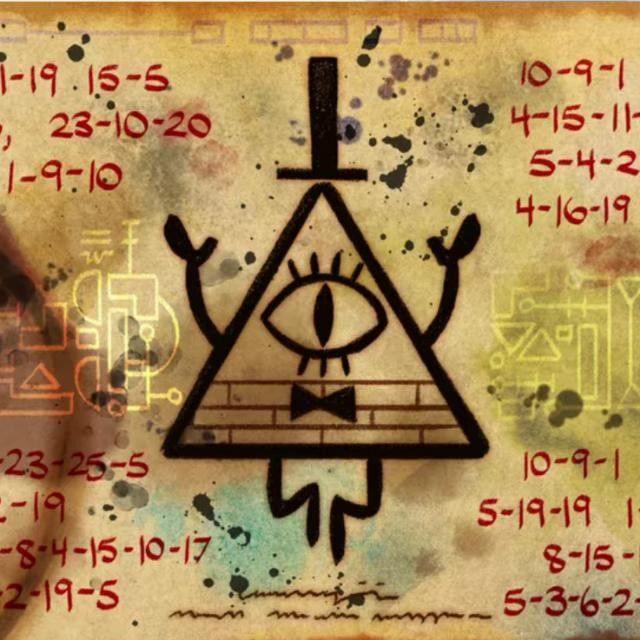 nine0058
nine0058 - Most importantly: the independence of the falling speed from the mass of any body. This fact of experience is the basic principle of general relativity: the principle of equivalence.
It is not so easy to check it with accuracy, and since the time of Galileo, experiments have never stopped, with more and more improvements (Etvos balance ...). René Descartes nine0003
This will both darken and lighten the discussion. Enlighten, because with its geometry it finally brings down the metaphysical world. Its geometric appearance is a perfect illustration of this.
On the other hand, he finds Galileo's Discorso (1638) disappointing because Galileo is not looking for "reasons". He will express his theory of gravity in terms of "whirlwind" and XVII - th centuries will constantly see whirlpools everywhere.
As a result of this work, the idea of instantaneous action at a distance is illegal and will remain so for a long time to come. nine0003
nine0003
The cause of gravity is indicated by Descartes in chapter XI " of the Treatise on Peace and Light" . The latter for him is neither the quality of the body, nor the result of any attraction, but the result of the movement of parts of the substance of the small sky surrounding the earth: “But now I want you to think that this is the weight of this Earth, that is, the force that unites everything its parts and makes them all tend toward its center, each more or less, according as they are more or less large and hard; which is different, and consists only in the fact that the parts of the little Sky which surround it, revolving around its center much faster than its own, also tend to move away from it with greater force, and consequently they grow there again. The details of the explanation remain subtle, but such an interpretation avoids recourse to occult qualities. “The Newtonian attraction will obviously be taken by the Cartesians as a return of occult qualities. " nine0003
From Galileo to Newton
Isaac Newton
Before Newton, there were two different corps: astronomy with Kepler's laws and free fall on Earth according to Galilean gravity. {2}}
{2}}
Newton claims to have done this in 1665-1666 during the plague of London. And to have the so-called "apple" intuition: a parable to express that he had the idea to connect Kepler's laws with Galileo's law, astronomy and gravity. This should have given him (Moon) = g / (60)². But that's not what he discovered (mainly due to bad data at the time). It remained for him to show that the attraction of the Earth is reduced to the attraction of a material point located in its center; however, he did not possess this result until 1684–1685. (the so-called Newton-Gauss theorem), that is, 20 years later. nine0003
During these 70 years, mechanics continued to develop. Koire fails to notice less than ten participants in a single free fall and possible eastward deflection, a problem that Galileo underestimated, but which Marin Mersenne wanted us to solve.
Newton and Hooke
Philosophiae Naturalis Principia Mathematica published in 1687 by Isaac Newton.
The idea that the acceleration of gravity decreases with height is in tune with the times since 1660 (establishment of the Royal Society). Halley went to Saint Helena; Richer in Cayenne. The secretary of the Royal Society, Robert Hooke, received dozens of letters through President Oldenburg. One concerns Christopher Wren's report on the Horrock phenomenon: the tables of the Moon cease to be accurate if we write that the Earth and Moon revolve around point G, which itself revolves according to Kepler's laws around the Sun. Hooke knows the concept of the center of mass and a week later he published a rather general one, from which it follows that the law of universal gravitation is universal and equal to 1 / r ².
But Ren won't let him say it and asks for a demonstration. Gook can't provide that.
A few years later, Hooke asked Newton a question about the motion of the Earth. Newton sends back a rather disappointed letter in which he explains the deviation to the East, but there is a stain in this letter. Hooke, overjoyed at this surprise, publishes that Newton was wrong. And this is the famous response letter that Newton sends (movement in the central field g ( r ) = g 0 , November 1679 ), which triggers a sequence of events.
Hooke, overjoyed at this surprise, publishes that Newton was wrong. And this is the famous response letter that Newton sends (movement in the central field g ( r ) = g 0 , November 1679 ), which triggers a sequence of events.
Halley wants to know if Newton knows the answer: do they include Kepler's laws of gravitational force at 1 / r ²? He delivered it to her in July 1684. Newton evasively answers in the affirmative, but this is in an old paper. December 1684, the answer comes: this is de Motu. but Newton asks Halley to keep it to himself because, as Newton says, “I have other ideas to complete what I have said. Give me some time. " nine0003
The case is being heard. Hooke can claim authorship of the discovery, it is clear to everyone that only Newton could write the Principia in two years: they will be published in 1687.
The startling assumption is that action at a distance is instantaneous. Newton himself refuses to comment on this fact: “I do not pretend to speculation; which means: I cannot understand the reasons for this fact.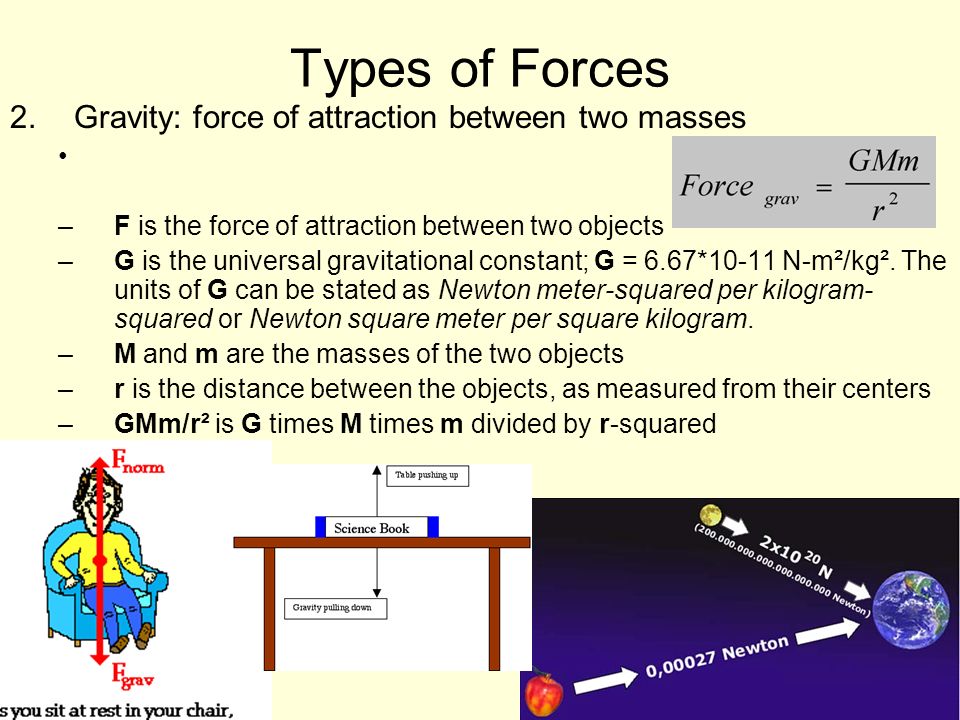 But everything fits into this law! "
But everything fits into this law! "
Cartesian in France shocked by the discovery. Even Huygens spoke out against this in a tragicomic book (1790 ). The deadline for accepting Newton's papers in France and Germany will be very long (almost 30 years). But enlightened circles are gradually rallying with Newton. Of course, the law leaves you speechless.
From modernity to modernity
Between Newton and Einstein
Albert Einstein, the father of general relativity, the modern theory of gravity.
From 1687 to 1915 there were many attempts to amend this law. In vain it was only alterations.
It has even been used as a model: the law between electrostatic charges (Charles de Coulomb) will be copied from Newton's law; then - between magnetic masses, but this last model was refuted by experience. nine0003
Until XX - th centuries, Newtonian gravity was not an inevitable quality to provide theoretical results according to experience and observation.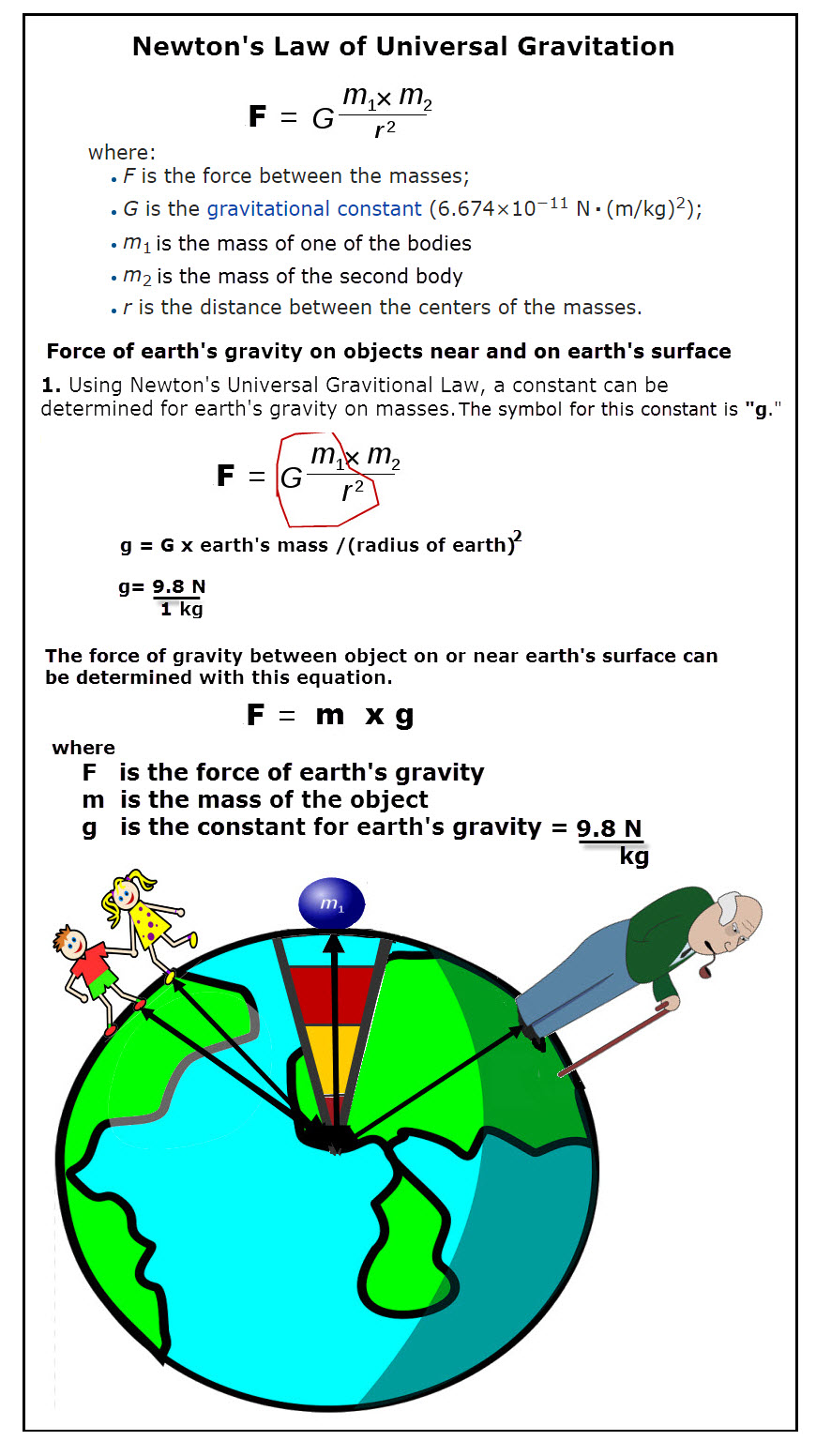 However, Newton himself, for several reasons, considered this unsatisfactory: gravity acts at a distance through a vacuum, and instantaneously.
However, Newton himself, for several reasons, considered this unsatisfactory: gravity acts at a distance through a vacuum, and instantaneously.
- In a letter from Newton to Richard Bentley in 1692: “Let gravity be innate, integral and essential to matter, so that one body can act on another at a distance through a vacuum, mediating nothing else than and through which their action and force can to be transmitted from one to another is an absurdity to me, from which I believe that no person who has the ability to reason intelligently on philosophical questions can ever plead guilty" nine0154
This criticism has been abandoned by some or bypassed by others with a kind of mechanical ether, colorless, intangible and weightless medium, instantly transmits the force of attraction: an idea introduced by Newton himself in General Scholium from book III in Principia . But this ether has always remained a passive hypothesis, not interfering with calculations, having the status of an encouraging hypothesis regarding the consistency of this theory.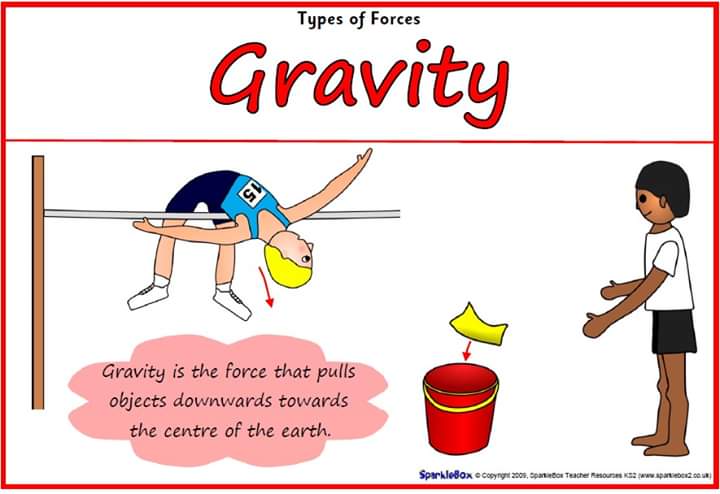
Under the influence of Michael Faraday, the concept 9 was introduced0009 fields, which allowed us to look at the problem from a different angle, in particular, using the concept of "rarefied flow", and which turned out to be important for subsequent advances in physics. especially for electromagnetism, and later for Einstein's modeling of gravity.
- Gravity field or force field is a property of space due to the mass of the body. Another mass in contact with this field is affected by the field. Thus, in this structure, the gravitational influence is not created and is not instantly transferred from one body to another, but is already present in all space in the form field, and in contact with it the body sees its changed dynamics.
The concept of the electromagnetic field proved to be especially relevant after that, especially because this field carries energy and momentum coming from the body that radiates it.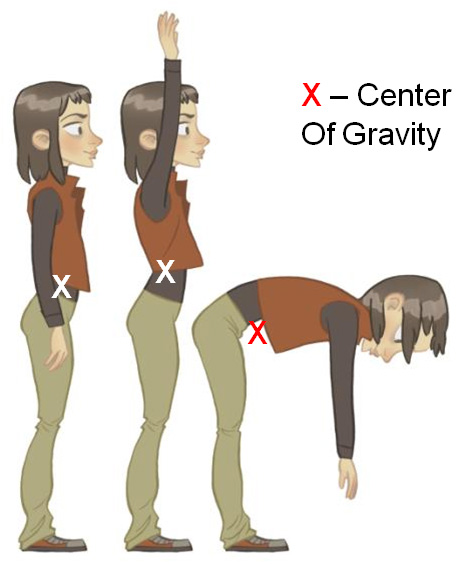 The gravitational field did not bring the same satisfaction and inherited the property of being instantly changed by the body that creates it. Moreover, the ether still remained a hypothetical support of the field. There is no doubt that the concept of a field influenced Einstein as early as 1905 .
The gravitational field did not bring the same satisfaction and inherited the property of being instantly changed by the body that creates it. Moreover, the ether still remained a hypothetical support of the field. There is no doubt that the concept of a field influenced Einstein as early as 1905 .
Einstein and after
Mercury orbits the Sun very slowly
Notes
- ↑ (in) Waheed, K.A., " Islam and the Origins of Modern Science ", Islamic Publishing Ltd. , , p.27.
- ↑ (in) Robert Briffo, The Creation of Mankind , London, G. Allen & Unwin Ltd. , 371 p.
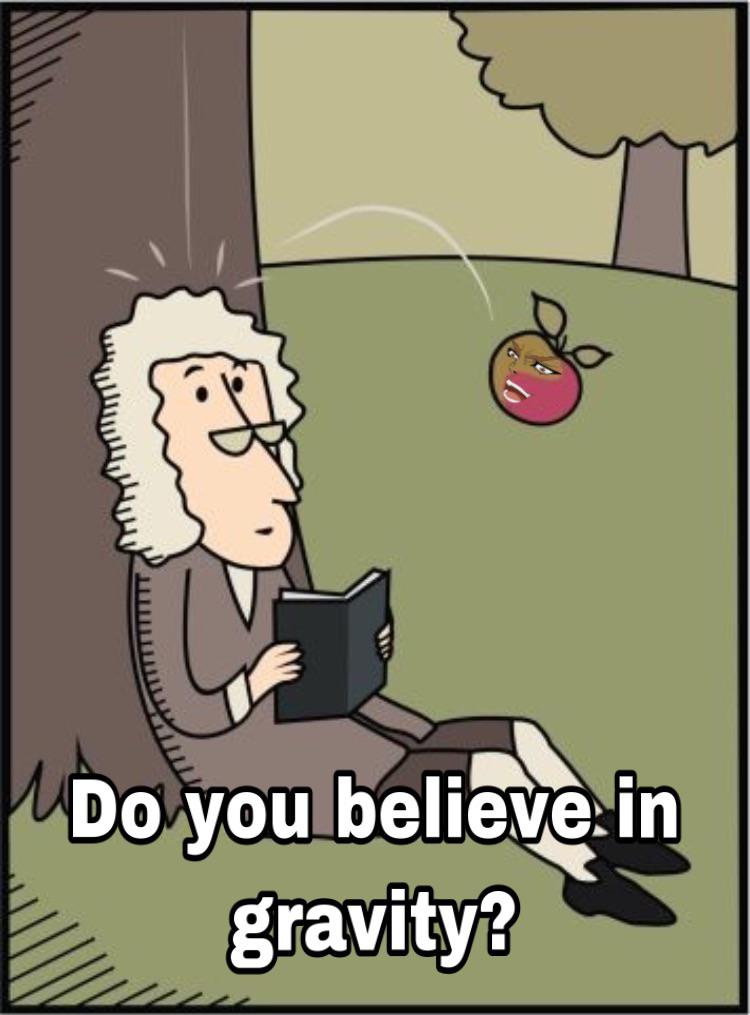 ( read online ) , p.191
( read online ) , p.191 - ↑ (in) George Saliba, " The First Arabic Criticism of Ptolemy's Cosmology: A Ninth Century Text on the Movement of the Celestial Spheres ", History Review of Astronomy , , p.116. (read online)
- ↑ Emile Brerier, Volume I, pp. 179-190 of History of Philosophy , Volumes I to III, PPU Publishing House, 1931, reprinted 1994 ( 7 - e edition) ( ISBN0 4 2 4 8 )
- ↑ Proposal from Aristotle on Physics , underlined by Emile Brachier, Volume I, pp. 593 of History of Philosophy , Volume I to III, PPU Publishing House, 1931, reprinted in 1994 ( 7 - edition 6 e ) (ISBN 213 044 378 8)
- ↑ Blay Michelle.
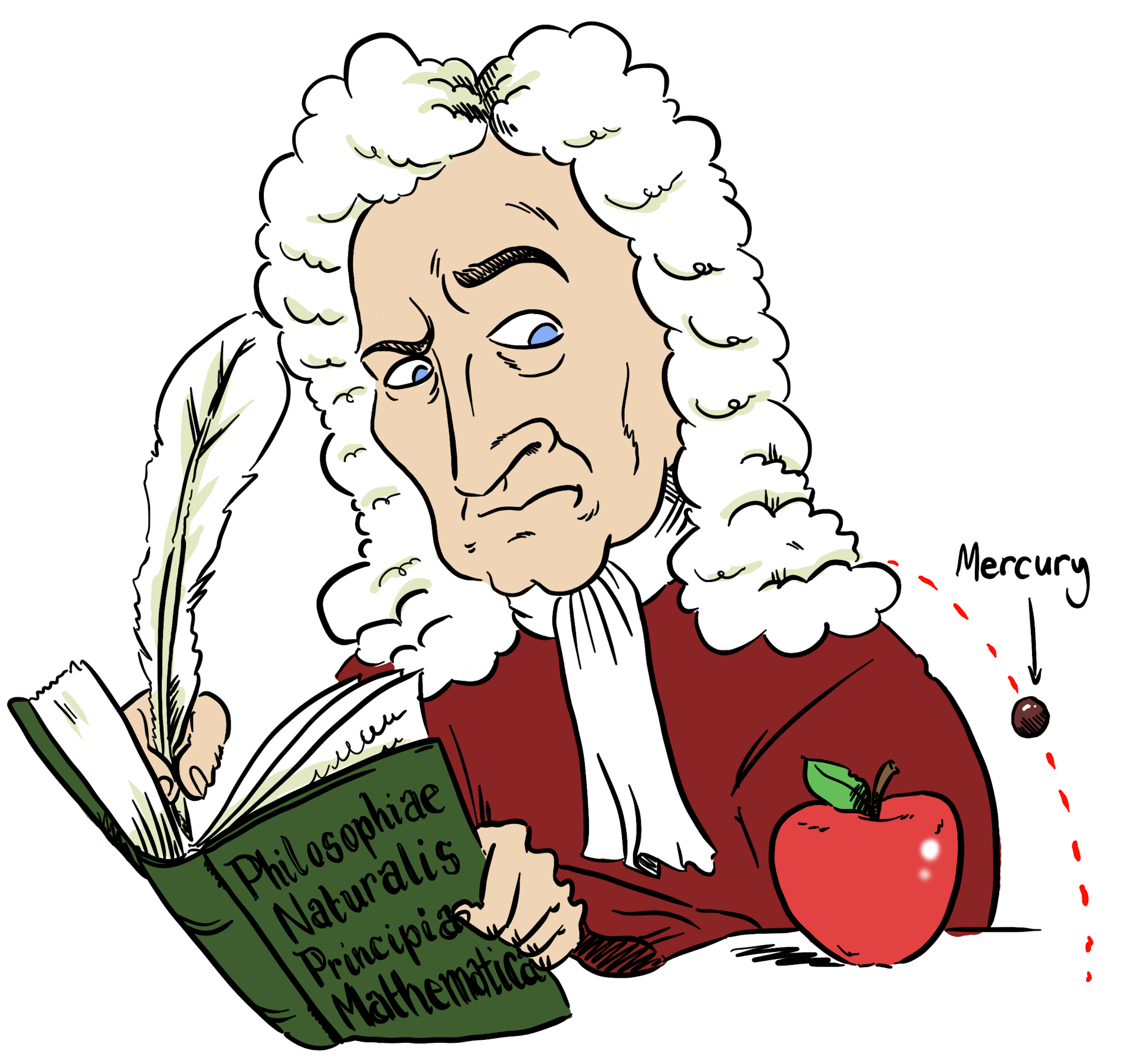 Dixit Françoise Balibar, in his book Einstein 1905. From ether to quanta .
Dixit Françoise Balibar, in his book Einstein 1905. From ether to quanta .
Bibliography
- Chandrasekhar: "Newton's Principles", OUP, 1995
- Hawking: On the Shoulders of Giants, Danod, 2003.
- Koire: "Galilean Studies"
- Koire: "Newtonian research"
- Koire: "the fall of the bodies of Galileo on Newton"
- Newton: "gravity", les belles lettres, 1985, ( ISBN 2 251 34502 7 )
- Zero: Testable Theories, 2005.
See also
Internal links
- Heavy pendulum: Galileo's experience is reported.
- Heavy pendulum composed of Huygens: we give a formula for the period of the pendulum.
- Gravity
External link
- (en) History of the concept of gravity . Sebastien Charnot (AIM, CEA, CNRS)
| History of science | |
|---|---|
| Chronology | Algebra Astronomy (Stellar Solar System) Biology Botany Chemistry Entomology Informatics Optics Ornithology Plant Pathology Women's Place in Science Health and Medicine Methods |
| Science and technology of civilization | Egypt Greece Rome China India Byzantium Arab World Middle Ages Ottoman Empire European Enlightenment nine0480 |
| Discipline stories | Anatomy Anthropology Archeology Astronomy (Gravity) Biology (Marine Biology Molecular Biology) Botany Chemistry (Electrochemistry Elements) Cryptology Ecology Economics Electrophysiology Genetics Geography Geology Natural Science Ichthyology IT Artificial intelligence Linguistics Logic Mathematics (Algebra Analysis Functional analysis Geometry Probability Statistics) Medicine (Surgery Dentistry Veterinary medicine Aviation medicine Occupational medicine Neurology Psychiatry) Meteorology Scientific method Mineralogy Paleoanthropology Paleontology Psychology Physics (Electricity Mechanics Quantum mechanics Magnetism Optics General relativity Special relativity Psychology (cognitive psychology Analytical psychology Psychoanalysis) Techniques In Ulcanology Zoology (primatology) nine0480 |

Gravity
Despite the fact that gravity - this is the weakest interaction between objects in the Universe, its importance in physics and astronomy is enormous, since it is able to influence physical objects at any distance in space.
Contents:
- 1 General information
- 2 Related materials
- 3 Gravitational fields
- 4 Gravitational radiation
- 5 Interesting effects of gravity
- 6 Related materials
- 7 Theories of gravity
- 8 Interesting facts
General information If you are interested in a question, astronomy like gravity or the law of universal gravitation. Gravity is a universal fundamental interaction between all objects in the Universe.
Related materials
The discovery of the law of gravity is attributed to the famous English physicist Isaac Newton. Probably, many of you know the story of an apple that fell on the head of a famous scientist. Nevertheless, if you look deep into history, you can see that the presence of gravity was thought about long before his era by philosophers and scientists of antiquity, for example, Epicurus. Nevertheless, it was Newton who first described the gravitational interaction between physical bodies within the framework of classical mechanics. His theory was developed by another famous scientist - Albert Einstein, who in his general theory of relativity more accurately described the influence of gravity in space, as well as its role in the space-time continuum. nine0003
Nevertheless, if you look deep into history, you can see that the presence of gravity was thought about long before his era by philosophers and scientists of antiquity, for example, Epicurus. Nevertheless, it was Newton who first described the gravitational interaction between physical bodies within the framework of classical mechanics. His theory was developed by another famous scientist - Albert Einstein, who in his general theory of relativity more accurately described the influence of gravity in space, as well as its role in the space-time continuum. nine0003
Newton's law of universal gravitation says that the force of gravitational attraction between two points of mass separated by a distance is inversely proportional to the square of the distance and directly proportional to both masses. The force of gravity is long-range. That is, regardless of how a body with mass moves, in classical mechanics its gravitational potential will depend purely on the position of this object at a given moment in time. The greater the mass of an object, the greater its gravitational field - the more powerful the gravitational force it has. Such cosmic objects as galaxies, stars and planets have the greatest force of attraction and, accordingly, rather strong gravitational fields. nine0003
The greater the mass of an object, the greater its gravitational field - the more powerful the gravitational force it has. Such cosmic objects as galaxies, stars and planets have the greatest force of attraction and, accordingly, rather strong gravitational fields. nine0003
Gravitational fields
Earth's gravitational field
The gravitational field is the distance within which gravitational interaction between objects in the Universe takes place. The greater the mass of an object, the stronger its gravitational field - the more noticeable its impact on other physical bodies within a certain space. The gravitational field of an object is potentially. The essence of the previous statement is that if we introduce the potential energy of attraction between two bodies, then it will not change after the latter move along a closed contour. From here emerges another famous law of conservation of the sum of potential and kinetic energy in a closed circuit. nine0003
In the material world, the gravitational field is of great importance. It is possessed by all material objects in the Universe that have mass. The gravitational field can influence not only matter, but also energy. It is due to the influence of the gravitational fields of such large space objects as black holes, quasars and supermassive stars that solar systems, galaxies and other astronomical clusters are formed, which are characterized by a logical structure.
It is possessed by all material objects in the Universe that have mass. The gravitational field can influence not only matter, but also energy. It is due to the influence of the gravitational fields of such large space objects as black holes, quasars and supermassive stars that solar systems, galaxies and other astronomical clusters are formed, which are characterized by a logical structure.
The latest scientific data show that the famous effect of the expansion of the Universe is also based on the laws of gravitational interaction. In particular, the expansion of the Universe is facilitated by powerful gravitational fields, both small and its largest objects. nine0003
Gravitational radiation
Gravitational radiation in a binary system
Gravitational radiation or gravitational wave is a term first introduced into physics and cosmology by the famous scientist Albert Einstein. Gravitational radiation in the theory of gravity is generated by the movement of material objects with variable acceleration.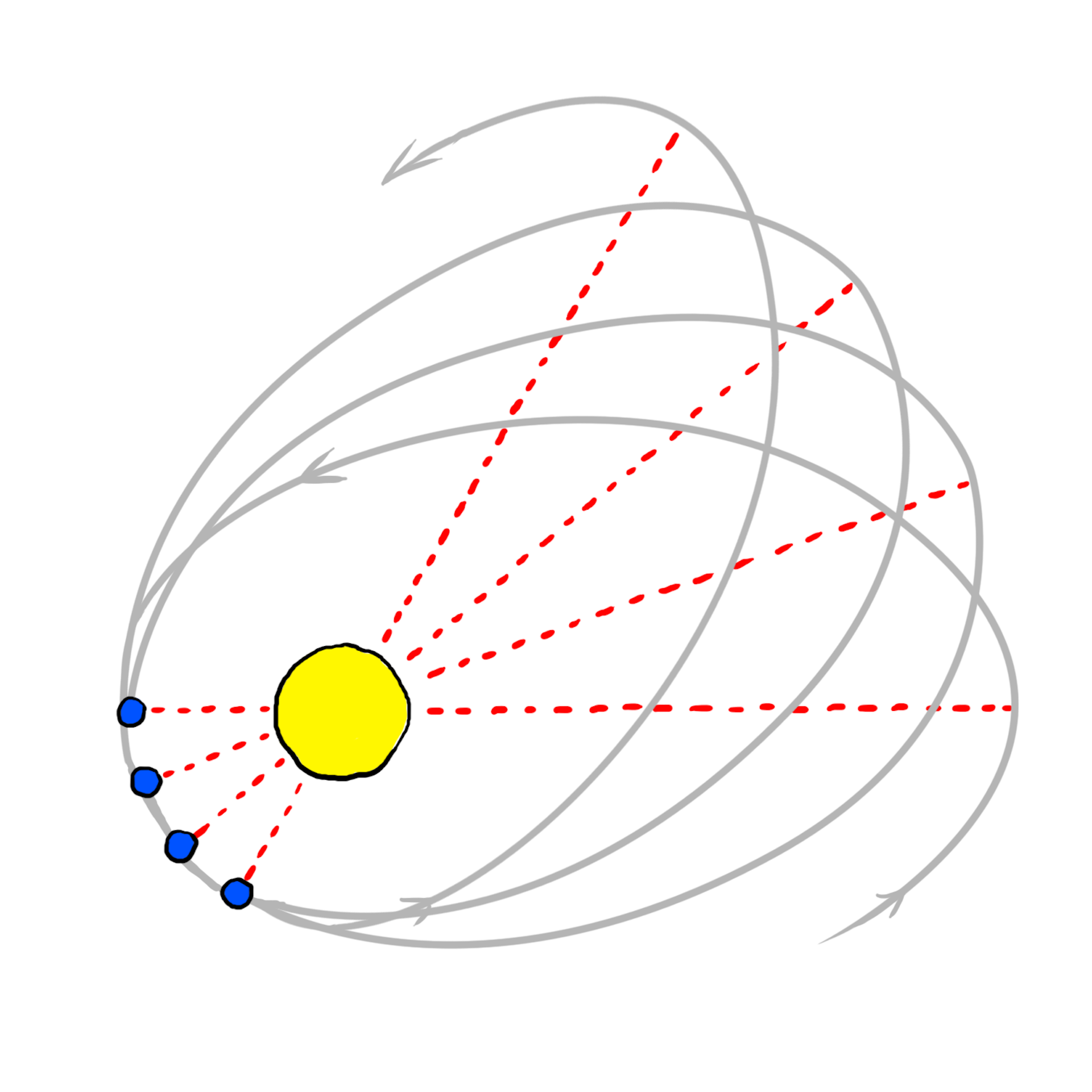 During the acceleration of the object, the gravitational wave, as it were, “breaks away” from it, which leads to fluctuations in the gravitational field in the surrounding space. This is called the gravitational wave effect. nine0003
During the acceleration of the object, the gravitational wave, as it were, “breaks away” from it, which leads to fluctuations in the gravitational field in the surrounding space. This is called the gravitational wave effect. nine0003
Although gravitational waves are predicted by Einstein's general theory of relativity, as well as other theories of gravity, they have never been directly detected. This is primarily due to their extreme smallness. However, there is circumstantial evidence in astronomy that can confirm this effect. Thus, the effect of a gravitational wave can be observed on the example of the approach of binary stars. Observations confirm that the rate of approach of binary stars to some extent depends on the loss of energy of these space objects, which is presumably spent on gravitational radiation. Scientists will be able to reliably confirm this hypothesis in the near future with the help of a new generation of Advanced LIGO and VIRGO telescopes. nine0003
Interesting effects of gravity
Related materials
There are two concepts of mechanics in modern physics: classical and quantum. Quantum mechanics was derived relatively recently and is fundamentally different from classical mechanics. In quantum mechanics, objects (quanta) have no definite positions and velocities, everything here is based on probability. That is, an object can occupy a certain place in space at a certain point in time. It is impossible to reliably determine where he will move next, but only with a high degree of probability. nine0003
Quantum mechanics was derived relatively recently and is fundamentally different from classical mechanics. In quantum mechanics, objects (quanta) have no definite positions and velocities, everything here is based on probability. That is, an object can occupy a certain place in space at a certain point in time. It is impossible to reliably determine where he will move next, but only with a high degree of probability. nine0003
An interesting effect of gravity is that it can bend the space-time continuum. Einstein's theory says that in the space around a bunch of energy or any material substance, space-time is curved. Accordingly, the trajectory of particles that fall under the influence of the gravitational field of this substance changes, which makes it possible to predict the trajectory of their movement with a high degree of probability.
Theories of Gravity
Today scientists know more than a dozen different theories of gravity. They are divided into classical and alternative theories. The most famous representative of the former is the classical theory of gravity by Isaac Newton, which was invented by the famous British physicist back in 1666. Its essence lies in the fact that a massive body in mechanics generates a gravitational field around itself, which attracts smaller objects to itself. In turn, the latter also have a gravitational field, like any other material objects in the Universe. nine0003
The most famous representative of the former is the classical theory of gravity by Isaac Newton, which was invented by the famous British physicist back in 1666. Its essence lies in the fact that a massive body in mechanics generates a gravitational field around itself, which attracts smaller objects to itself. In turn, the latter also have a gravitational field, like any other material objects in the Universe. nine0003
The next popular theory of gravity was invented by the world famous German scientist Albert Einstein at the beginning of the 20th century. Einstein managed to more accurately describe gravity as a phenomenon, and also to explain its action not only in classical mechanics, but also in the quantum world. His general theory of relativity describes the ability of such a force as gravity to influence the space-time continuum, as well as the trajectory of elementary particles in space.
The most accurate gravity map of the Earth
Among the alternative theories of gravity, perhaps the most attention deserves the relativistic theory, which was invented by our compatriot, the famous physicist A. A. Logunov. Unlike Einstein, Logunov argued that gravity is not a geometric, but a real, fairly strong physical force field. Among the alternative theories of gravity, scalar, bimetric, quasi-linear and others are also known.
A. Logunov. Unlike Einstein, Logunov argued that gravity is not a geometric, but a real, fairly strong physical force field. Among the alternative theories of gravity, scalar, bimetric, quasi-linear and others are also known.
Interesting facts
- For people who have been in space and returned to Earth, it is quite difficult at first to get used to the force of the gravitational influence of our planet. Sometimes it takes several weeks. nine0058
- It has been proven that the human body in a state of weightlessness can lose up to 1% of bone marrow mass per month.
- Among the planets, Mars has the least force of attraction in the solar system, and Jupiter has the greatest.
- The well-known Salmonella bacteria, which cause intestinal diseases, behave more actively in a state of weightlessness and can cause much more harm to the human body.
- Among all known astronomical objects in the Universe, black holes have the greatest gravitational force.
